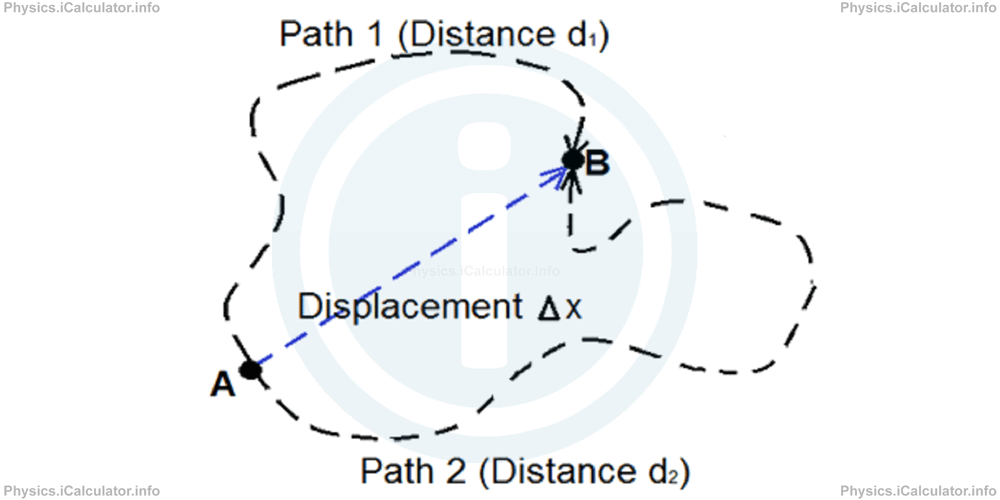Menu
Physics Lesson 5.1.1 - What is Work in Physics?
Please provide a rating, it takes seconds and helps us to keep this resource free for all to use
Welcome to our Physics lesson on What is Work in Physics?, this is the first lesson of our suite of physics lessons covering the topic of Work and Energy. Types of Energy, you can find links to the other lessons within this tutorial and access additional physics learning resources below this lesson.
What is Work in Physics?
The term "Work" in Physics is slightly different from the concept of "Work" in daily life. Thus, if you are employed as a supervisor in a company, your boss may pay you only to observe what happens or how the other employees are behaving or working. You may do this job sitting on your chair, without moving at all and still being paid.
In Physics however, the concept of "Work" is different. If you are not able to move something from its place, you have not done any work despite your efforts. No work is done in a Physics context if you only sit still and observe what happens around. Also, if something is moving but this movement is not because of your action, you are not doing any work as this process doesn't involve you at all. Thus, in Physics, a system, person or object is doing work if both the abovementioned conditions simultaneously meet, i.e.:
- If a force is exerted on a certain object, and
- If the object changes its place due to the action of the given force.
Mathematically, we have:
In symbols,
Equation 1
W = F⃗ × ∆x⃗Attention!
- Despite the Force and Displacement are both vector quantities, Work is scalar as it is calculated by the dot product of two vectors, which gives a scalar.
- Do not confuse the terms "Displacement" and "Distance". The Displacement (A⃗B⃗) represents the shortest path from point A to the point B while the Distance AB represents the length of the true path when an object has moved either from A to B or from B to A. Look at the figure below.

In this figure, there are three possible paths to move the circular object from A to B. The shortest one, i.e. the straight line (or the vector) that connect these two points represents the Displacement Δx while the two other paths are longer as magnitude. Hence, they simply represent two Distances AB. To calculate the Work required for moving the object from A to B, we must multiply the force F needed to move the object and the Displacement Δx, not the Distance d. Thus, W = F ∙ Δx, (not F ∙ d).
You have reached the end of Physics lesson 5.1.1 What is Work in Physics?. There are 5 lessons in this physics tutorial covering Work and Energy. Types of Energy, you can access all the lessons from this tutorial below.
More Work and Energy. Types of Energy Lessons and Learning Resources
Whats next?
Enjoy the "What is Work in Physics?" physics lesson? People who liked the "Work and Energy. Types of Energy lesson found the following resources useful:
- Work Feedback. Helps other - Leave a rating for this work (see below)
- Work, Energy and Power Physics tutorial: Work and Energy. Types of Energy. Read the Work and Energy. Types of Energy physics tutorial and build your physics knowledge of Work, Energy and Power
- Work, Energy and Power Revision Notes: Work and Energy. Types of Energy. Print the notes so you can revise the key points covered in the physics tutorial for Work and Energy. Types of Energy
- Work, Energy and Power Practice Questions: Work and Energy. Types of Energy. Test and improve your knowledge of Work and Energy. Types of Energy with example questins and answers
- Check your calculations for Work, Energy and Power questions with our excellent Work, Energy and Power calculators which contain full equations and calculations clearly displayed line by line. See the Work, Energy and Power Calculators by iCalculator™ below.
- Continuing learning work, energy and power - read our next physics tutorial: Kinetic Energy
Help others Learning Physics just like you
Please provide a rating, it takes seconds and helps us to keep this resource free for all to use
We hope you found this Physics lesson "Work and Energy. Types of Energy" useful. If you did it would be great if you could spare the time to rate this physics lesson (simply click on the number of stars that match your assessment of this physics learning aide) and/or share on social media, this helps us identify popular tutorials and calculators and expand our free learning resources to support our users around the world have free access to expand their knowledge of physics and other disciplines.